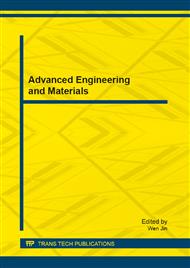p.286
p.292
p.298
p.304
p.310
p.319
p.326
p.332
p.338
Hydrogen Permeation Behavior through HSLA Steels and its Implications on Hydrogen Embrittlement Susceptibility
Abstract:
In order to investigate the susceptibility of HSLA steels to hydrogen embrittlement (HE) when cathodic protection system was applied, a new electrochemical hydrogen permeation test method was performed to measure the hydrogen permeation current behavior through X65 steel and X80 steel in artificial seawater with different polarized potentials. Besides, slow strain rate test (SSRT) was introduced to study the effect of penetrated hydrogen atoms on the HE susceptibility of the steels. Results showed that with the decrease of the polarized potential, the sub-surface hydrogen concentration in the steels became higher and higher, and the corresponding HE susceptibility increased as well. What’s more, the X80 steel was more vulnerable to HE, and that owns to the minor grain size and M-A microstructure, which may trap more hydrogen atoms, and thus led to the HE susceptibility difference between the two steels. All these findings would be used as guidance when cathodic protection were carried out for offshore HSLA steel structures.
Info:
Periodical:
Pages:
310-316
Citation:
Online since:
February 2013
Authors:
Keywords:
Price:
Сopyright:
© 2013 Trans Tech Publications Ltd. All Rights Reserved
Share:
Citation:


